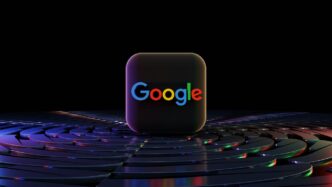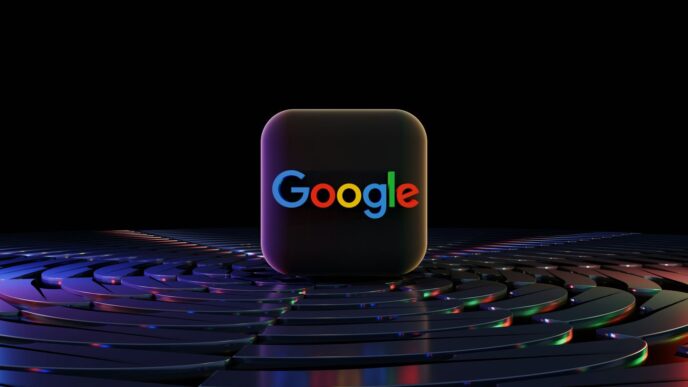The internet has changed a lot over the years. Remember when websites were just static pages, like online brochures? Well, those days are pretty much gone. Now, it’s all about people getting involved, sharing stuff, and working together. This big shift is what we call Web 2.0, and it brought in a bunch of new ways for us to use the internet. We’re going to look at some of the main web 2.0 features that made this happen and how they changed everything.
Key Takeaways
- Web 2.0 made the internet a place where people could really get involved, not just look at things.
- It brought in new ways for people to put their own content online, like videos and blog posts.
- New web tools made websites feel more like desktop programs, with lots of interactive parts.
- Web 2.0 helped people connect and work together online in ways that weren’t possible before.
- It also made it easier for different online services to share information with each other, which was a big deal for how things work now.
Empowering User-Generated Content
Facilitating User Input
Web 2.0 really changed how people interact with websites. Before, it was mostly just reading stuff, but now, users can actually put their own thoughts and creations out there. Think about it: blogs, forums, comment sections – these all let regular folks share what’s on their mind. It’s not just text either; people upload pictures, videos, and audio. This shift means websites aren’t just static pages anymore; they’re living, breathing spaces shaped by everyone who visits. This ability for users to contribute directly has completely reshaped the online landscape. It’s like moving from a one-way street to a bustling town square where everyone has a voice.
Cultivating Collective Intelligence
When lots of people contribute, something cool happens: collective intelligence. It’s like everyone puts a piece of their knowledge into a big pot, and suddenly, you have something much bigger and better than any single person could create alone. Wikis are a perfect example of this, where countless individuals build and refine articles together. It’s not just about facts, though. Think about product reviews or community-driven troubleshooting guides. People share their experiences, good and bad, and that helps others make better decisions or solve problems. This kind of shared knowledge makes the internet a much more useful place for everyone. It’s a powerful way to build a strong social media strategy for any platform.
Diverse Content Contributions
User-generated content isn’t just one thing; it’s a huge mix of different formats and ideas. You’ve got everything from short social media posts to detailed articles, from quick photos to full-length videos. This variety is what makes the web so rich and interesting. It means there’s something for everyone, no matter what they’re looking for. And because it comes from real people, it often feels more authentic and trustworthy than content created by big companies. This diversity also means that niche interests can find a home and a community, which might not have been possible in the old web. It’s a testament to how much creativity is out there when people are given the tools to share it.
Advancing Rich Web Technologies
Leveraging HTML5, CSS3, and JavaScript
Back in the day, building websites felt a bit like working with stone tablets. You had static pages, and if you wanted anything to move or change, it was a whole production. Then came HTML5, CSS3, and JavaScript, and everything shifted. These aren’t just minor updates; they’re the bedrock of modern web development. HTML5 brought new elements for better structure and multimedia, making it easier to embed videos and audio without needing extra plugins. CSS3 gave us incredible control over styling, allowing for complex layouts, animations, and responsive designs that adapt to any screen size. And JavaScript? Well, that’s the engine that makes everything interactive. It lets us manipulate page content, handle user input, and communicate with servers without reloading the whole page. These technologies together made it possible to build web applications that feel as smooth and responsive as desktop software. They really changed the game for what a website could be.
Enhancing Interactivity with AJAX
Before AJAX, if you clicked a button that needed new information from the server, the entire page would just reload. It was clunky and slow, especially on less-than-perfect internet connections. AJAX, which stands for Asynchronous JavaScript and XML, changed all that. It’s not a single technology but a technique that uses JavaScript to send and receive data from a server in the background, without interrupting what the user is doing on the page. This means parts of a page can update dynamically. Think about typing in a search bar and seeing suggestions pop up instantly, or liking a post on social media without the whole page refreshing. That’s AJAX at work. It made web applications feel much more fluid and responsive, a huge step forward for user experience. It’s a core reason why modern web apps feel so snappy.
Crafting Immersive User Experiences
With all these new tools, developers could finally start building web experiences that were truly engaging. It wasn’t just about displaying information anymore; it was about creating environments users wanted to spend time in. This meant focusing on things like:
- Visual Appeal: Using CSS3 for stunning designs, animations, and transitions that make interfaces feel polished and inviting.
- Responsiveness: Ensuring websites look and work great on any device, from a tiny phone screen to a huge desktop monitor. This is crucial for reaching a wide audience.
- Intuitive Navigation: Designing interfaces that are easy to understand and use, so people can find what they need without getting lost.
- Real-time Feedback: Providing immediate responses to user actions, like showing a loading spinner or a success message, so users always know what’s happening.
- Personalization: Tailoring content and experiences based on user preferences or past behavior, making the site feel more relevant to each individual.
These elements combined to create web applications that were not just functional but genuinely enjoyable to use. The shift from static pages to dynamic, interactive experiences was a huge part of the Web 2.0 revolution, and it continues to shape how we interact with the internet today. For more on how these technologies are used, check out web development trends. It’s all about making the web a more engaging place.
Fostering Interactivity and Collaboration
Web 2.0 really changed how we all use the internet, making it way more about people actually doing stuff and working together. It’s not just about looking at pages anymore; it’s about being part of the action. This shift made the web a much more lively place, where everyone can jump in and contribute.
Enabling Dynamic Content Generation
One of the biggest changes with Web 2.0 was how content got made. Before, it was mostly big companies or experts putting stuff out there. Now, anyone can create and share. Think about blogs, for example. Suddenly, regular people could write about anything they wanted, sharing their thoughts and experiences with the whole world. This opened up a ton of new voices and perspectives. It also meant that websites weren’t just static pages; they were constantly changing and growing because users were always adding new things. This dynamic nature made the web feel much more alive and relevant to everyday life. It’s like the internet went from being a library to being a giant, ongoing conversation.
Promoting Social Networking
Social networking is a huge part of Web 2.0, and it completely changed how we connect with each other online. Platforms like Facebook, X (formerly Twitter), and Instagram became places where people could hang out, share updates, and just generally keep in touch. It wasn’t just about finding old friends; it was about building new communities around shared interests. These sites made it super easy to share photos, videos, and thoughts with a wide audience, or just with a small group of close friends. This ability to connect and share on a massive scale really made the internet feel more personal and less like a cold, distant tool. It also led to new ways of communicating, like instant messaging and quick status updates, which became part of our daily routines. The rise of social networking also showed how powerful user-generated content could be, as people shared their lives and opinions with millions.
Supporting Collaborative Editing
Collaborative editing is another cool feature that came out of Web 2.0, and it’s all about people working together on the same document or project, often at the same time. Think about something like Wikipedia. It’s a massive encyclopedia, but it’s not written by a small team of experts. It’s built by millions of people all over the world, each contributing and refining information. This kind of collective effort was pretty revolutionary. It showed that a lot of people, even strangers, could work together to create something really big and useful. This concept also applies to things like Google Docs, where multiple people can edit a document simultaneously, seeing each other’s changes in real-time. This makes teamwork much smoother, especially when people are in different places. It’s a great example of how Web 2.0 made the internet a place for active participation and shared creation, moving beyond just consuming information to actually building it together. This kind of collaboration is even easier with modern low-code platforms that simplify development.
Integrating Social Media Capabilities
Driving Interoperability and Data Exchange
Web 2.0 really changed how different online things talk to each other. Before, it was like every website was its own island, and getting them to share information was a huge headache. But then, things started to get smarter, and now, it’s pretty normal for apps and sites to work together. This whole idea of things being able to "talk" to each other is called interoperability, and it’s a big deal for how we use the internet today.
Utilizing Machine Readable Formats
One of the big shifts in Web 2.0 was making data something computers could actually understand, not just humans. Think about it: if a computer can read and make sense of information, it can do a lot more with it. This is where machine-readable formats come in. They’re basically ways of organizing data so that software can easily process it. This ability for machines to interpret data has opened up a lot of new possibilities for how information is used and shared online.
- RSS Feeds: These were pretty popular for a while, letting you subscribe to updates from websites without having to visit them directly. It was a simple way to get new content delivered to you.
- APIs (Application Programming Interfaces): These are like the secret handshakes between different software programs. They define how one program can ask another program for information or tell it to do something. If you’ve ever logged into a website using your Google or Facebook account, you’ve used an API.
- JSON and XML: These are common formats for sending data back and forth between web servers and browsers. They’re structured in a way that’s easy for computers to parse and understand, making data exchange much smoother.
Integrating Third-Party Functionality
Because of these machine-readable formats and APIs, it became much easier for websites to include features from other services. This is what we mean by integrating third-party functionality. Instead of every website having to build everything from scratch, they could just plug into existing services. It’s like building with LEGOs – you can use pre-made pieces to create something new.
For example, think about a website that lets you book a hotel. They don’t need to build their own map system; they can just use Google Maps through its API. Or a blog that lets you share articles directly to Twitter or Facebook. That’s all thanks to third-party integration. It makes websites more powerful and useful without a ton of extra work for the developers.
Seamless Data Sharing Across Platforms
The ultimate goal of all this is to make data sharing feel effortless. You shouldn’t have to jump through hoops to get your information from one place to another. Web 2.0 really pushed for this idea of seamless data sharing across platforms. It’s about making the internet feel more connected and less like a bunch of separate islands.
This means you can often:
- Share a photo from Instagram directly to Facebook.
- Connect your Spotify account to a fitness app to track your workout music.
- Use a single sign-on (like "Login with Google") to access multiple different websites.
This kind of interconnectedness makes the user experience much better. It saves time and makes it easier to manage your digital life. It’s a big part of what makes modern web applications so convenient and powerful.
Transforming Business and Communication
Real-Time Collaborative Tools
Web 2.0 really changed how businesses work together. Before, if you needed to work on a document with someone, you’d email it back and forth, making a bunch of different versions. It was a mess. Now, with tools like Google Docs or Microsoft 365, everyone can be in the same document at the same time. You see what others are typing, and changes happen instantly. This kind of real-time collaboration has made teams way more efficient, cutting down on miscommunication and speeding up project completion. It’s like everyone is in the same room, even if they’re on different continents. This shift has been huge for companies, letting them get things done faster and with fewer headaches. It’s not just documents either; think about shared whiteboards or project management software where tasks update live. It’s all about getting everyone on the same page, literally.
Streamlining Workflow Integration
Integrating different parts of a business workflow used to be a nightmare. You’d have one system for sales, another for customer support, and maybe a third for inventory. Getting them to talk to each other was a huge, expensive project. Web 2.0, with its focus on open standards and APIs, made this a lot easier. Now, applications can connect and share data much more smoothly. For example, a customer service ticket might automatically create a task in a project management system, or a sale in an e-commerce platform could trigger an update in inventory. This kind of integration means less manual data entry, fewer errors, and a much more fluid operation. It’s all about making sure information flows where it needs to go without getting stuck. This helps businesses run like a well-oiled machine, reducing bottlenecks and improving overall productivity. It’s a big reason why smaller businesses can compete with bigger ones now, because they can use these integrated tools to be just as efficient.
Enhancing Online Productivity
Web 2.0 has really boosted how much we can get done online. Think about all the online services we use every day that just make life easier. From cloud storage that lets you access your files anywhere to online meeting platforms that connect people globally, these tools are all about making us more productive. It’s not just about work either; even things like online banking or shopping have become so much more streamlined. The ability to access information and services instantly, from any device, has changed the game. For businesses, this means employees can work from home, collaborate with international partners, and access all the resources they need without being tied to a physical office. It’s about creating a flexible and efficient work environment that wasn’t really possible before. The web page context shows how much the internet has changed, and productivity is a big part of that. It’s pretty wild to think about how much has changed in just a few years.
Conclusion
So, what does all this mean? Basically, Web 2.0 changed everything about how we use the internet. It brought us things like social media, blogs, and all those apps where we can create stuff and share it with everyone. It made the internet a place where people could actually talk to each other and work together, not just look at static pages. This shift made the web way more interesting and useful for everyday folks. It’s pretty wild to think about how much things have changed, and it all started with these ideas.
Frequently Asked Questions
What exactly is Web 2.0?
Web 2.0 changed the internet from just showing pages to letting people create and share their own stuff. Think of social media, blogs, and wikis – these are all examples of Web 2.0 where users are in charge.
How is Web 2.0 different from the older internet?
Before Web 2.0, websites were mostly static, like online brochures. You could look at them, but you couldn’t really add your own thoughts or connect with others easily. Web 2.0 made the internet much more interactive and social.
What are some of the main technologies that make Web 2.0 work?
Web 2.0 uses cool tools like HTML5, CSS3, and JavaScript to make websites look good and work smoothly. Also, AJAX helps parts of a page update without reloading the whole thing, making everything feel faster and more responsive.
Does Web 2.0 help people work together and be social online?
Absolutely! Web 2.0 is all about people working together. Think of sites where many people can write and edit content, or social networks where you can chat and share with friends. It’s about building things together online.
How does Web 2.0 make it easier to share things and connect with others?
Web 2.0 lets you share your content across different platforms, like posting a picture on Instagram and having it show up on Facebook too. It also makes it easy to connect your accounts, so your online life feels more connected.
What does Web 2.0 do for sharing information between different websites and apps?
Web 2.0 helps different online tools and services talk to each other. This means you can often use data from one app in another, making things like online teamwork much smoother and more efficient.














